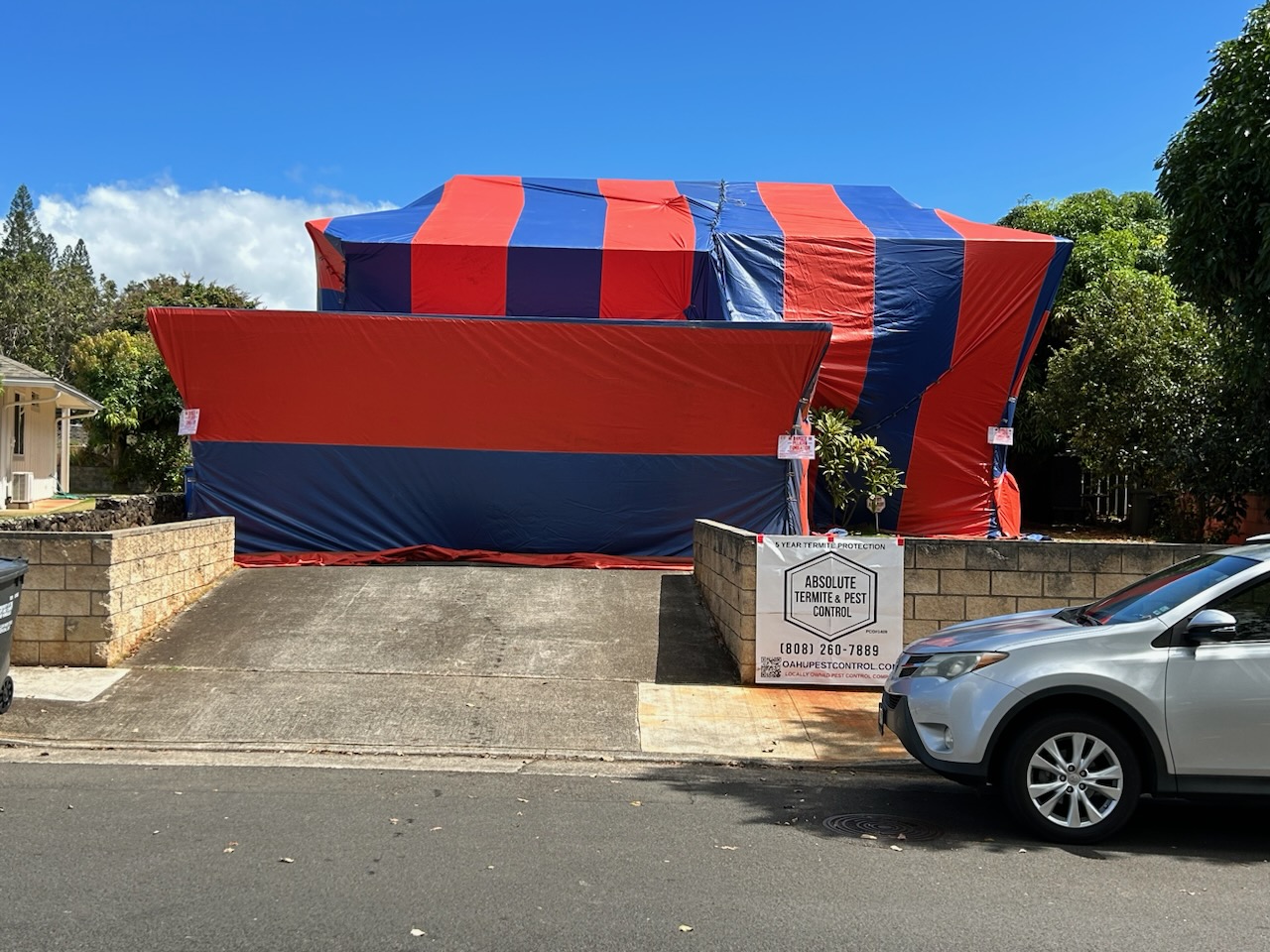Understanding How Ground Treatment for Subterranean Termites Can Protect Your Home
- Absolute Pest Control Hawaii PCO#1409
- 2 days ago
- 4 min read
Subterranean termites are voracious pests that can destroy the structural framework of your home, often without you even realizing it. With the potential for damage running into thousands of dollars, it is vital to be proactive. Ground treatment offers a robust solution to keep these pests at bay. In this post, we will explore what ground treatment involves, how it functions, and the significant benefits it brings to homeowners.
What are Subterranean Termites?
Subterranean termites are notorious for their destructive capabilities and thrive in moist, warm environments. They typically dwell underground, building colonies in the soil near homes. An alarming fact is that a single colony can house up to two million termites, which collectively can consume the equivalent of a 2x4 piece of wood in just 5 months. These pests gain entry into homes through cracks in the foundation and by infesting wooden structures in direct contact with the ground. Detecting them early is crucial; studies show that 80% of homes with a termite infestation experience damage ongoing for over a year before discovery.
What is Ground Treatment?
Ground treatment, also referred to as soil treatment, includes the application of chemical barriers in the soil around a home’s foundation. This approach creates a protective barrier that targets subterranean termites, either repelling them or exterminating them before they enter your home. Typically, professional pest control services are the best choice for this process. They evaluate the specific risks based on environmental conditions and can apply the most suitable treatment efficiently.
There are a variety of chemical solutions for ground treatment, including liquid insecticides and bait systems. It is crucial to choose a well-versed pest control expert who knows local regulations and can implement the most effective methods ensuring lasting protection.
How Does Ground Treatment Work?
Ground treatment establishes a barrier that termites cannot cross. In the liquid application method, insecticides are injected into the ground surrounding the foundation, effectively creating a chemical moat. Studies demonstrate that when done correctly, these chemical barriers can last up to five years and maintain their effectiveness against termites.
On the other hand, bait systems use strategically placed bait stations that contain substances attractive to termites. Once termites consume the bait, they carry it back to their colony, causing significant reductions in the population. Regular inspections and maintenance of these barriers are essential to ensure continued effectiveness. In fact, homes receiving regular treatments report a 90% lower likelihood of severe infestations.
Benefits of Ground Treatment
Prevention of Extensive Damage: The primary advantage of ground treatment is that it proactively protects your home. For instance, homeowners who invest in ground treatment can save up to 50% on repair costs compared to those who wait for damage to occur before taking action.
Peace of Mind: Knowing your home is secured against subterranean termites eliminates constant worry. Homeowners can comfortably go about their lives, assured that their homes are structurally sound.
Increased Home Value: A strong history of termite damage can lower a home's market value significantly. Homes with regular ground treatments maintain their value better, as buyers are often wary of properties with a history of pest issues.
Customizable Solutions: Each home has unique requirements. Pest control specialists can assess features such as soil composition, moisture levels, and existing pest activity to create a tailored treatment plan, maximizing effectiveness.

The Process of Ground Treatment
Understanding how ground treatment works can help alleviate concerns among homeowners. Here’s a simple breakdown:
Inspection: A pest control expert begins with a thorough inspection of your home. They look for signs of termite activity such as mud tubes, wood damage, or even swarming termites.
Assessment: Following the inspection, the specialist evaluates the risks and outlines the most effective treatment plan based on the findings.
Application: After establishing a treatment plan, the technician applies the chosen solutions around the home’s foundation. This may involve digging trenches or drilling small holes to ensure the chemicals penetrate the soil.
Monitoring: After treatment, continual monitoring is crucial. Pest control companies often schedule follow-up visits to examine the area and verify that the chemical barrier remains intact. Regular inspections can catch any emerging issues swiftly.
Maintaining Protection Against Termites
While ground treatment is highly effective, ongoing maintenance is essential. Here are key strategies homeowners should consider:
Regular Inspections: Schedule annual inspections with pest control experts to catch any signs of termite activity early.
Moisture Control: Properly managing moisture levels around your home can greatly deter termites. Fix leaks promptly and ensure good drainage.
Proper Landscaping: Avoid allowing soil or mulch to touch your foundation. Also, ensure that wooden structures like decks are not in direct contact with the ground.
Wood Maintenance: Use treated wood for outdoor structures to help discourage termites from nesting nearby.
Protecting Your Home the Smart Way
Ground treatment for subterranean termites is vital to safeguard your investment. By understanding how this treatment works and its many benefits, homeowners can make informed choices about pest control. Taking proactive measures and maintaining vigilant practices can significantly lower the risk of termite infestations, ensuring a safe and sound environment for your family.
Investing in ground treatment is more than just a preventive action; it is a commitment to the health and longevity of your home. Prioritize protection against termites, and you not only preserve your home’s value but also create a stable sanctuary for your family.











Comments